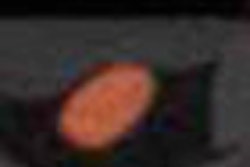Delayed allergic reactions to CT contrast media occur more frequently than previously reported, says a new study in the June issue of Radiology. Radiologists need to keep an eye out for these patients -- who have often already left the facility -- to counsel them and respond appropriately.
Delayed allergic reactions are affecting more patients than ever with the rapid increase in the use of CT over the past two decades, and they may have serious sequelae, wrote study authors Shaun Loh, MD, Sepideh Bagheri, MD, Richard Katzberg, MD, and colleagues from the University of California, Davis. Nearly 7 million CT scans were performed in the U.S. in 2007, the authors noted.
"If we presume 50% of these examinations are performed with contrast media and a 2.7% rate of skin rashes, this equates to 927,450 cases of skin rash in the United States alone, which is a major public concern," they wrote (Radiology, June 2010, Vol. 255:3, pp. 764-771).
These late contrast reactions, most often cutaneous, are only rarely reported to the radiologist "and are ascribed to other causes because contrast agents have a biologic half-time of only about 1.5 hours, are too small to function unbound as antigens, and are minimally protein bound," Loh and colleagues wrote.
Of 539 patients in the study in total, 258 (mean age, 55.6 years ± 13.2) underwent contrast-enhanced scans, receiving the monomeric, nonionic, low-osmolar contrast agent iohexol (Omnipaque 350, GE Healthcare, Chalfont St. Giles, U.K.), with an osmolality of 844 mOsm/kg and iodine content of 350 mg/mL.
An additional 281 patients not receiving contrast material (mean age, 52.06 years ± 15.9) served as the control group. There was a statistically significant difference between the mean ages of the iohexol group and the control group (p = 0.044), which was slightly older.
In addition, a small number of patients at the beginning of the study received iodixanol (Visipaque 320, GE Healthcare), which stopped when the facility replaced the agent with Omnipaque.
CT was performed for routine indications in all cases, and before the exam patients received a questionnaire asking them to report any delayed allergic reaction occurring more than one hour after the CT scan. The questionnaire listed 16 manifestations of allergic reactions, including rash, skin redness, skin swelling, nausea, vomiting, dizziness, and other indications.
After scans, patients were asked to contact the clinical trials monitor if they noticed any "alarming or persistent signs or symptoms," according to the authors. The clinical trials coordinator also called the patients by phone for further assessment of their responses to the questionnaire.
In all, 403 of 539 participants (74.8%) returned the completed questionnaires, and 72 of the 136 participants who did not return the questionnaire were contacted by the trials monitor, yielding a final follow-up rate of 88.1% (475 of 539 patients).
Patients suspected of having moderately severe cutaneous reactions were invited to return for a complete assessment by a dermatologist including skin biopsy, if indicated.
According to the results, delayed allergic reactions were seen in 37 (14.3%) of 258 subjects receiving iohexol and in seven (2.5%) of 281 subjects in the control group (p < 0.0001) after adjusting for sex and age.
The specific manifestations of delayed allergic reactions that were significantly more frequent at contrast-enhanced CT versus noncontrast scans were skin rash (p = 0.0311), skin redness (p = 0.0055), skin swelling (p = 0.0117), and headache (p = 0.0246).
"[Delayed allergic reactions] involving the skin included generalized rashes of the face, neck, chest, back, and extremities and were often associated with swelling, erythema, and pruritus," Loh and colleagues wrote. Approaching but not reaching statistical significance were nausea, loss of energy or fatigue, and dizziness or lightheadedness.
"The pathophysiology of cutaneous [delayed allergic reactions] is speculative but likely represents a spectrum of T cell-mediated delayed hypersensitivity," the authors wrote. A "recent classification of drug hypersensitivity proposes four subsets (IVa-IVd) of delayed drug hypersensitivity reactions reflected by distinct T cell subsets and cytokine and chemokine activation profiles."
Specific characteristics of the contrast medium molecule related to the pathophysiology of delayed allergic reactions are unknown, but it appears that nonionic dimers have higher rates, they added.
Study limitations included the use of a questionnaire, the significant age difference between the contrast and noncontrast groups, and the use of a single contrast agent.
"Our results support a cause-and-effect relationship from contrast material administration," the authors concluded. "Greater awareness is needed by the radiologic community, especially with increasing and more common use of contrast-enhanced CT in clinical diagnosis."
By Eric Barnes
AuntMinnie.com staff writer
June 4, 2010
Related Reading
Gadobenate better than gadopentetate contrast in MRA, May 24, 2010
ISCT speakers offer advice on managing CT contrast reactions, May 19, 2010
High glucose signals contrast risk in angio patients, March 31, 2010
ACC: Cardiac cath contrast has low adverse reaction rates, March 17, 2010
Mayo study finds few serious reactions to CT and MRI contrast, September 21, 2009
Copyright © 2010 AuntMinnie.com




















